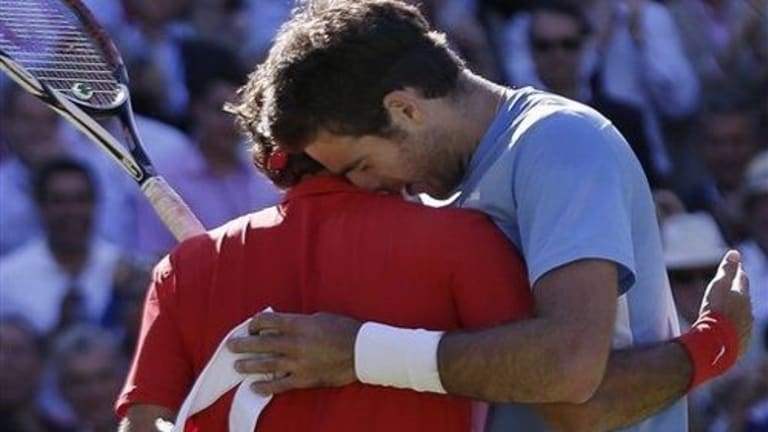The U.S. Open looks like the laggard among the Grand Slams these days because it has no roofed stadium to ensure that at least some tennis is played every day, and to top it off USTA officials recently announced that their comprehensive $500 million renovation has no provisions for a roof or domed venue.
But in other ways, the U.S. major has been — and continues to be — a pacesetter. One conspicuous example is the embrace of the fifth-set tiebreaker. It is the only major tournament that embraces it, and even the recent Olympic Games — an event quadrennially shoehorned into the already crowded tennis calendar — elected to play out final sets.
I must admit, I was never a big fan of the final-set tiebreaker. Playing full sets seemed to be such a strong indicator of gravitas. There's always been something macho, in a good way, about the practice. It was "old school," and "traditional," and all that. And in all honestly, the lore and legend of tennis is strewn with 21-19 (Andy Roddick d. Younes El Aynaoui, Australian Open, 2003), 19-17 (Roger Federer d. Juan Martin del Potro, Olympics, 2012) scores. Why eliminate that interesting element in the game?
But we recently had that epic 70-68 (John Isner d. Nicolas Mahut, Wimbledon 2010) result, and let's face it — that monster put the kibosh on any hope of establishing a new record for most games, longest elapsed time, and most aces in a tennis match. Or it did for at least the next 200 years. Compared to that wrestle, Federer over Delpo at the Olympics seemed like small potatoes. So it's a good time to call it quits, kiss the deuce set good-bye, and embrace the final set tiebreaker. I take the Isner-Mahut mindbender as a sign from on high that it's time to move on.
The recently concluded Olympic tennis changed my mind on this issue, but my main reason for embracing the final-set tiebreaker is not the obvious one that would be cited by most time-sensitive television producers. The real problem with deuce sets is that when a match goes as long as Federer v. Delpo or even Jo-Wilfried Tsonga v. Milos Raonic (that one went 25-23, for Tsonga) the reward for the winner's heroic feat is almost always a quick subsequent loss.
This is one of those "what you only find in the fine print" issues. In 2003, when Roddick won that great quarterfinal clash with El Aynaoui, he lost in the semis to unheralded Rainer Schuettler of Germany, in four tepid sets. After the storied 70-68 win over Mahut at Wimbledon, Isner lost to No. 46 ranked Thiemo de Bakker in the second round. Isner got five games in three sets. After Paul-Henri Mathieu knocked off heavily favored Isner, 18-16 in the fifth at Roland Garros earlier this year, he lost his next match to No. 23 Marcel Granollers. And we all saw what Murray did to Federer in the Olympic Games gold medal match after the top-seeded Swiss survived that long (4:26) match with Delpo, a battle that established a new elapsed-time record for a three-set match.
Granted, del Potro did go on to snatch the bronze medal from Novak Djokovic. But I tend to think of that as the exception that proves the rule. And so what if Tsonga put up a win over Feliciano Lopez after his marathon with Raonic? Fatigue is cumulative as well as immediate.
So count me among those who believe final sets ought to be decided like the ones that came before, by tiebreaker. It just seems silly to cling to the full final set format when it almost always ensures that whoever wins enjoys only a phyrric victory. I suppose I could live with the idea of deuce sets in a final, where tomorrow doesn't matter, or even in Davis Cup — if the Lords of Tennis want to keep the flame of tradition flickering. We've seen many Davis Cup players rebound with amazing strength after a tough first match, but the three-day format is friendly to such heroics.
In typical tournament tennis, even at Grand Slams, playing out the final set before the final round stage is like issuing the competitive death warrant for both players. And that doesn't do anybody, or the game at large, any good.
